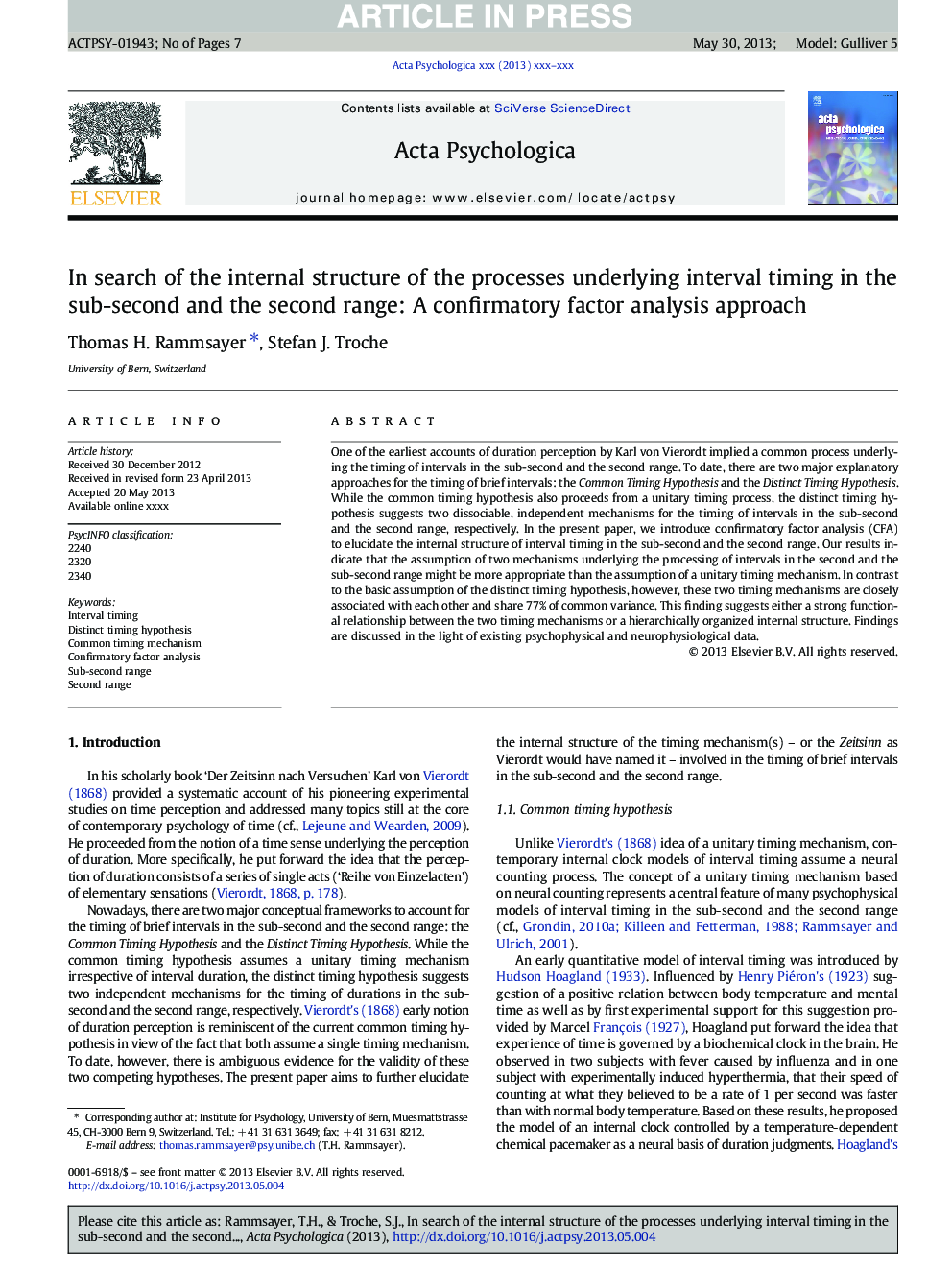| Article ID | Journal | Published Year | Pages | File Type |
|---|---|---|---|---|
| 7277910 | Acta Psychologica | 2014 | 7 Pages |
Abstract
One of the earliest accounts of duration perception by Karl von Vierordt implied a common process underlying the timing of intervals in the sub-second and the second range. To date, there are two major explanatory approaches for the timing of brief intervals: the Common Timing Hypothesis and the Distinct Timing Hypothesis. While the common timing hypothesis also proceeds from a unitary timing process, the distinct timing hypothesis suggests two dissociable, independent mechanisms for the timing of intervals in the sub-second and the second range, respectively. In the present paper, we introduce confirmatory factor analysis (CFA) to elucidate the internal structure of interval timing in the sub-second and the second range. Our results indicate that the assumption of two mechanisms underlying the processing of intervals in the second and the sub-second range might be more appropriate than the assumption of a unitary timing mechanism. In contrast to the basic assumption of the distinct timing hypothesis, however, these two timing mechanisms are closely associated with each other and share 77% of common variance. This finding suggests either a strong functional relationship between the two timing mechanisms or a hierarchically organized internal structure. Findings are discussed in the light of existing psychophysical and neurophysiological data.
Related Topics
Life Sciences
Neuroscience
Cognitive Neuroscience
Authors
Thomas H. Rammsayer, Stefan J. Troche,
